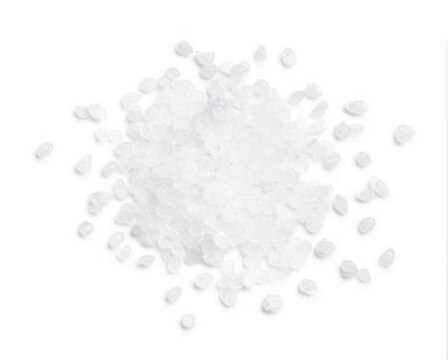403598
Silica gel
high-purity grade (7754), pore size 60 Å, 70-230 mesh
Sign Into View Organizational & Contract Pricing
All Photos(1)
About This Item
CAS Number:
EC Number:
MDL number:
UNSPSC Code:
23201100
PubChem Substance ID:
NACRES:
SB.52
grade
high-purity grade (7754)
Quality Level
form
powder
manufacturer/tradename
EMD Millipore®
technique(s)
LPLC: suitable
surface area
550 m2/g
matrix
Silica
matrix active group
silica
particle size
63-200 μm
70-230 mesh
pore size
~0.8 cm3/g pore volume
60 Å
bp
2230 °C
mp
>1600 °C
separation technique
hydrophilic interaction (HILIC)
SMILES string
O=[Si]=O
InChI
1S/O2Si/c1-3-2
InChI key
VYPSYNLAJGMNEJ-UHFFFAOYSA-N
Looking for similar products? Visit Product Comparison Guide
Related Categories
General description
Silica gel is a rigid 3D network of colloidal silica. It is exclusively used as a support material for the active titanium(III) centers in Ziegler-Natta catalysts. Silica gel allows a controlled fragmentation resulting in the formation of uniform polymer particles with narrow particle size distribution and high bulk density. Silica gel is classified as below:
a. Aquagel - pores are filled with water
b. Xerogel - by the process of evaporation, aqueous phase in the pores are removed
c. Aerogel - solvent removed by supercritical extraction
a. Aquagel - pores are filled with water
b. Xerogel - by the process of evaporation, aqueous phase in the pores are removed
c. Aerogel - solvent removed by supercritical extraction
Application
Silica gel was used to compare MCM-41 type mesoporous adsorbents.
Other Notes
Low levels of Fe, Cu, Zn, Cl-, SO42-, and NO3- reduce irreversible adsorption.
Legal Information
EMD Millipore is a registered trademark of Merck KGaA, Darmstadt, Germany
Storage Class Code
11 - Combustible Solids
WGK
nwg
Flash Point(F)
Not applicable
Flash Point(C)
Not applicable
Choose from one of the most recent versions:
Already Own This Product?
Find documentation for the products that you have recently purchased in the Document Library.
Customers Also Viewed
T Martin et al.
Chemical communications (Cambridge, England), (1)(1), 24-25 (2002-07-18)
Texture-related features of water intrusion in hydrophobised MCM-41 silicas render these materials especially suitable for energy dissipation in mechanical dampers.
A simple method for production of pure silica from rice hull ash
Kalapathy, U., A. Proctor, and J. Shultz.
Bioresource Technology, 73, 257-262 (2000)
Silica gel supported zirconocene dichloride/methylalumoxane catalysts for ethylene polymerization: Effects of heterogenation on activity, polymer microstructure and product morphology.
Janiak, Christoph, and Bernhard Rieger.
Angew. Makromol. Chem., 215, 47-57 (1994)
Our team of scientists has experience in all areas of research including Life Science, Material Science, Chemical Synthesis, Chromatography, Analytical and many others.
Contact Technical Service

